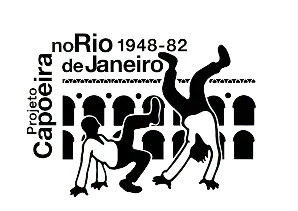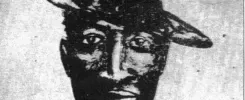By Juliana Pereira & Matthias Röhrig Assunção.
The Bohemian Lapa
According to Olavo de Barros, Lapa became a “favorite stronghold” of artists, poets, beggars, rogues, gigolos and prostitutes who not only passed through there, but also resided there, allowing the coexistence of various social actors. Many well-known artists in their time were associated with Lapa, and some of them are illustrious to this day, such as Lima Barreto, Vila Lobos and João do Rio. But this bohemian image of Lapa is also associated with the underworld of malandros (rogues), usually represented by black characters who circulated there. The most known of them is João Francisco dos Santos, better known as Madame Satã who for years lived and worked in the outskirts of Lapa, when he was not imprisoned in Ilha Grande.
From the 1980s on, Lapa underwent modernisation and remodelling projects. Today the neighbourhood concentrates a large number of show houses and moves the Carioca nightlife.
The capoeira roda in Lavradio street, coordinated by Mestre Célio and the Aluandê group, seeks to give more visibility to this historical tradition of malandragem in Lap
References:
ARAÚJO, Vanessa Jorge. Lapa carioca, uma (re) apropriação do lugar. 2009. Dissertação de mestrado. Programa de Pós-Graduação em Planejamento Urbano e Regional, UFRJ.
GOMES, Renato Cordeiro. O Imaginário da Lapa: Apogeu, Decadência e Reconstrução. 2014. Tese de Doutorado. PUC-Rio.
BARROS, Olavo de. A Lapa do meu tempo (1909-1914). 1968.
MACEDO, Joaquim Manuel de. Os dois amores (1848). São Paulo, 1950.
https://www.brasilianaiconografica.art.br/artigos/20233/arcos-da-lapa-de-aqueduto-a-viaduto
https://www.bn.gov.br/acontece/noticias/2015/09/rio-450-anos-bairros-rio-lapa





